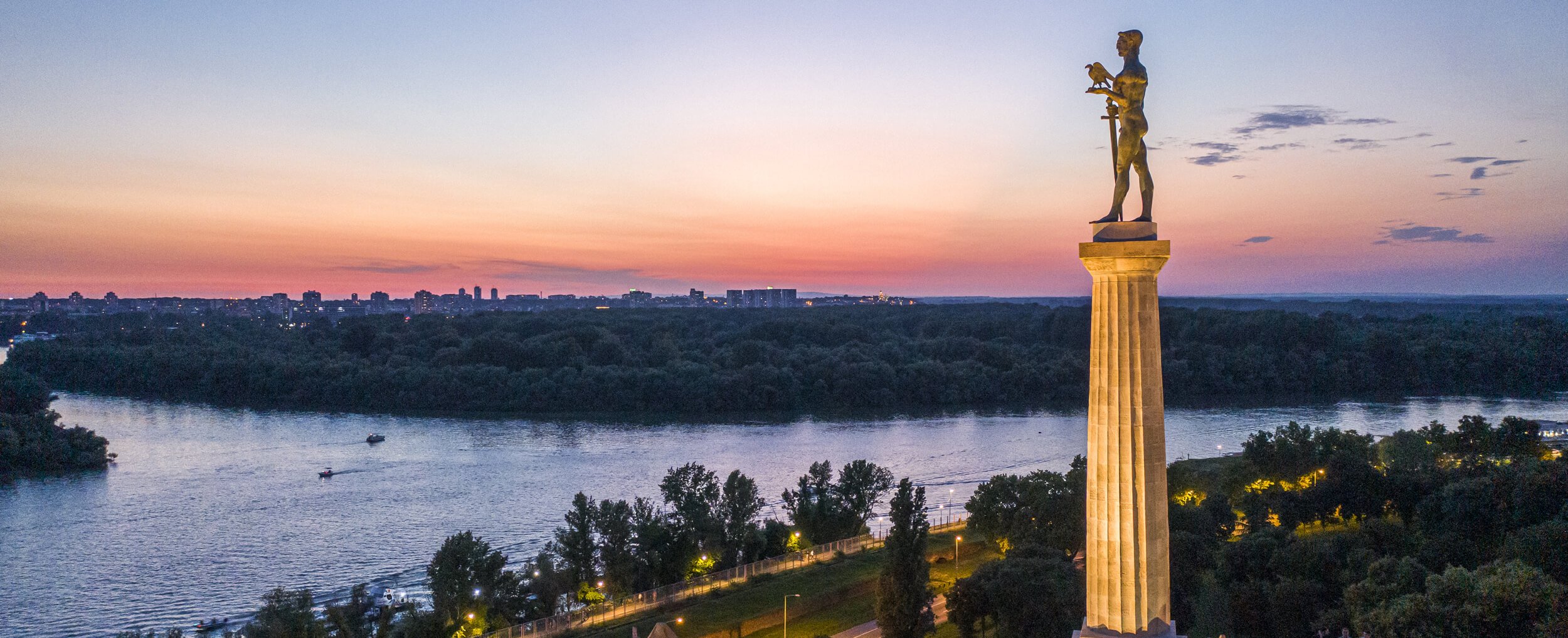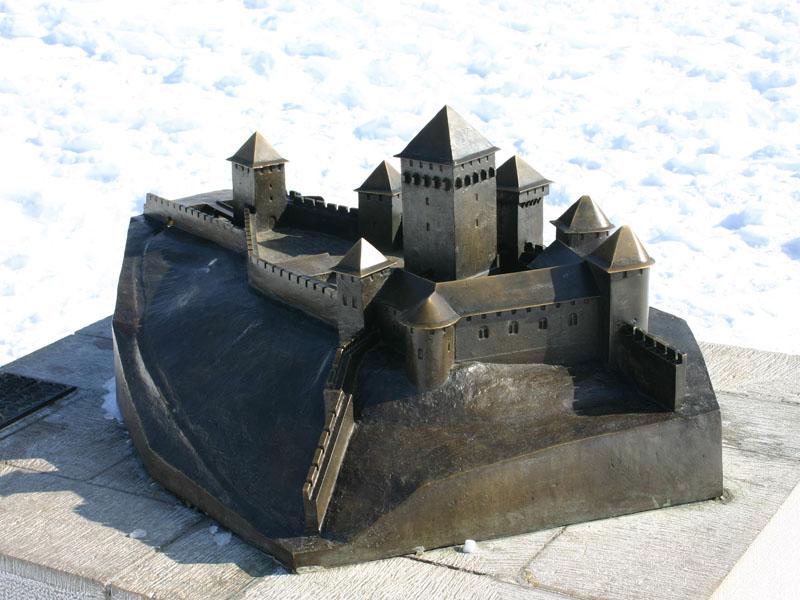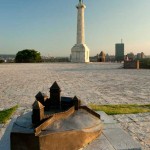The scale model of the castle of Despot Stefan Lazarevic, the work of the sculptor Kolja Milunovic, is placed approximately in the centre of the medieval castle. This part of the fortress underwent the greatest changes and the greatest destruction over time, especially at the end of the 17th century. During the Turkish siege, a large explosion of gunpowder almost completely destroyed the ramparts and towers of the castle. By clearing these ruins, a mostly flat space was obtained, completely different than it was originally. Thanks to the scale model, it is easy to imagine the previous appearance of this part of the fortress.
The core of the castle is actually a castellum that was built in the 12th century by order of the Byzantine emperor Manuel I Komnenos. The space, about 135 metres long and about 60 metres wide, was enclosed by ramparts protected by towers. The remains of this first fortification were discovered during archaeological excavations and part of the rampart with two towers can be seen on the edge of the slope, behind today’s rampart which dates from the end of the 17th century.
In the first decade of the 15th century, the castellum was thoroughly renovated and turned into a castle with the court of Despot Stefan Lazarevic. Parts of the castle were separated by a partition rampart, within which there was a large dungeon tower with a drawbridge — the last line of defence of the court. Due to its size and significance, this tower was named ‘Nebojsa’ (Fearless). After the destruction during the Turkish siege at the end of the 17th century this name was given to a much smaller, octagonal tower on the bank of the Danube.
The court was in a smaller part, on the ridge. There were originally several buildings here, among which the most important was the one with a large hall where the Despot received official guests. There was a chapel in the court complex, as well as a renowned library, and it is believed that the house of the Despot’s sister Olivera was there too. In the second, larger part, separated by a rampart from the front part of the castle, there were ancillary buildings of the court and barns.
The entrance to the castle was located across from the fountain of Sokollu Mehmed Pasha, where parts of the walls of the two entrance towers can still be seen today. There used to be a wooden bridge here, which stretched over a defensive trench. It was on that bridge, during the night of 21st July 1456, that the battle between the Turks and the defenders of Belgrade took place and a nearby memorial serves as a reminder of that event.



